A variety with a melon aroma and high yield - Russian pumpkin and the secrets of its cultivation
The Russian pumpkin variety is valued for its cold resistance and high yield. The fruits are consumed fresh, frozen for the winter, and made into pickles. In order not to look for high-quality pumpkin on supermarket shelves, many prefer to grow the Rossiyanka crop in their own plot. Moreover, the plant is unpretentious in care and has high immunity to unfavorable climatic factors.
Let's take a closer look at what the large-fruited Russian pumpkin is and how to grow a healthy and tasty crop.
Description of the variety
The variety is recommended for cultivation in central Russia and the Moscow region. The vegetable is cultivated in greenhouses and open beds; the ripening period is 90-100 days. It does not require special care, so it is great for beginner gardeners.
Distinctive features
The bushes are compact, semi-spreading. The leaf blade is wide, the lashes are of medium length. During the ripening process, many additional shoots are formed that must be removed. The variety rarely gets sick and is resistant to insect pests. The best yield is shown on loose and nutritious soils.
Fruit characteristics and yield
The pumpkins are small, the weight of one varies from 2 to 4 kg. The pulp is dense, sweet, with a melon aroma. The surface is smooth, the color is orange. The taste and product qualities are excellent; the Rossianka variety is universal in use. From 1 sq.m, gardeners collect about 6 kg of delicious and beautiful fruits.
Interesting! Pumpkin is 90% water and contains beta-carotene, which is beneficial for human health. This powerful antioxidant neutralizes the negative effects of free radicals and protects the body from premature aging.
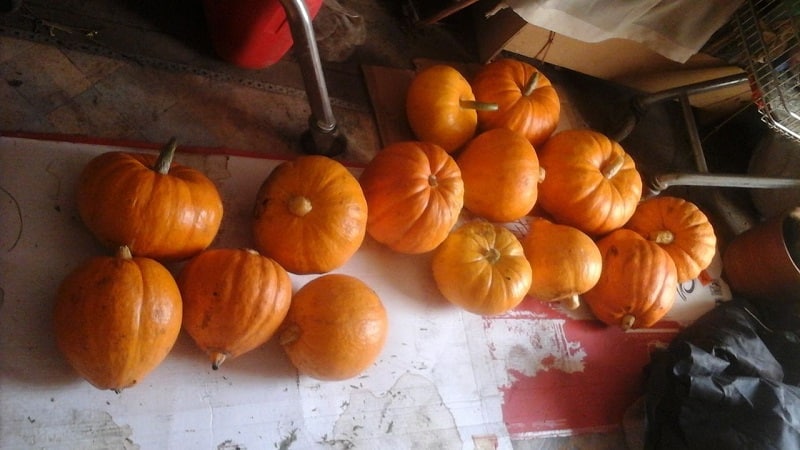
How to grow
Vegetables are planted in several ways. Let's consider each of them in detail, identifying distinctive features and features.
Planting seeds in open ground
This method is suitable for growing vegetables in the southern regions of the country with favorable climatic conditions. First of all, prepare the seeds themselves. The material is etched by heating at a temperature of +65° C for 2-3 hours. After which the seeds are hardened at a temperature of +1 °C for 24 hours. Hardening strengthens the plant's immunity and accelerates adaptation to weather conditions.
Next, it is recommended to wash the seeds with Formalin and running water. Only after all procedures is the material ready for planting.
Important! Pay attention to preparing the beds. Pumpkins should not be planted after cucumbers or zucchini; it is better to give preference to beds of greens or cabbage. A warm area with a deep arable layer and loose soil is allocated for the crop.
The crop loves cleaned beds, which experienced gardeners take care of in advance. Weeds are removed from the beds and dug up to a depth of 30 cm. To ensure that the soil retains moisture, it is mixed with light loamy soil and dry sawdust is added.
For reliability, the mineral vermiculite is added to the soil. It saturates the soil with beneficial properties, which has a beneficial effect on the future harvest. Seeds are planted according to a 1 x 1.5 m pattern. 3-5 seeds are placed in pre-prepared holes at a time.Sprinkle the top with soil and peat chips.
Planting seedlings
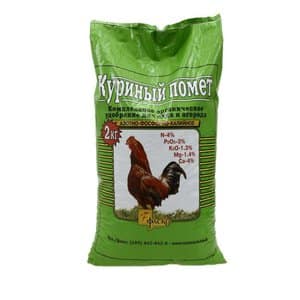 For seedlings soil and container required. As seedling soil, disinfected soil from the garden or ready-made compounds are used. Experienced summer residents recommend disinfection in any case to avoid fungi and infections. Peat or humus will help increase the germination of seedlings.
For seedlings soil and container required. As seedling soil, disinfected soil from the garden or ready-made compounds are used. Experienced summer residents recommend disinfection in any case to avoid fungi and infections. Peat or humus will help increase the germination of seedlings.
Plant seedlings in any container, the main thing is that it is clean and dry. Most often, peat tablets and pots, plastic cassettes with pallets, and boxes are used as containers. Soil is poured into the container, watered abundantly and holes 1-1.5 cm deep are made. The seeds are placed in the ground, sprinkled with earth and watered again.
For normal development of seedlings, it is necessary to moisten the seedlings once a week. It is important to avoid excess water - excessive humidity increases the risk of developing diseases.
To accelerate growth, succinic acid or the stimulant Heteroauxin are added to the seedlings. The products increase seed germination by 10-20% and develop increased immunity. Feed the pumpkin several times. For the first feeding, organic liquid fertilizers, such as bird droppings, are used. The second time it is recommended to add mineral components.
Care
Water the beds using a watering can or hose. When using a watering can, be sure to put on a special nozzle, and when using a hose, clamp the stream so that the water is distributed evenly. It is recommended to water the pumpkin not at the root, but in a special groove near the bush. This technique will help not wash the roots and keep the young stems safe and sound. Before watering, loosen the soil by 10-15 cm. Moisten the soil in the morning or evening to avoid sunburn.
Feeding plays a special role. After planting on the site, the plant is fed after 15 days. Vermicompost, compost, humus, ash, and liquid manure are recognized as excellent top dressing. Organic fertilizers reduce soil acidity and improve microflora. 2-3 liters of fertilizer are used for 1 bush.
As for mineral fertilizers, summer residents prefer to feed plants with superphosphate or potassium salt, as well as complex mineral preparations, such as “Magic Watering Can”, “Juno”, “Garden Mix”. They are easy to use and promote healthy pumpkin development.
Important! Do not apply fertilizers to dry soil; plants may get burned. Before the procedure, the beds must be watered.
Features of cultivation and possible difficulties
A month after planting in the garden, they begin to form a bush. As soon as 1-2 fruits form on the main stem, it is pinched. In this case, the length of the lateral processes should be no more than 50-60 cm in order for ovaries to form on them. If this is not done in time, then many small fruits appear on the bushes, which do not have time to ripen due to a limited supply of food. During the formation of the bush, watering is reduced.
Experienced farmers always monitor what mineral fertilizers they apply and in what quantity. For example, ammonium nitrate and calcium nitrate contain nitrogen, an excess of which can lead to fruit wilting. Therefore, it is not recommended to apply these fertilizers together. Summer residents advise alternating organic and mineral nutrition with each other in order to maintain proper metabolism.
Growing tips from experienced gardeners
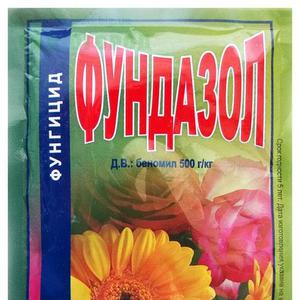 To avoid problems with growing, gardeners recommend following basic agrotechnical rules: water and fertilize the beds on time, apply fertilizers in a timely manner and loosen the soil.
To avoid problems with growing, gardeners recommend following basic agrotechnical rules: water and fertilize the beds on time, apply fertilizers in a timely manner and loosen the soil.
In addition, vegetable growers share their secrets of a rich harvest:
- lime the soil to reduce its acidity and make it more nutritious;
- germinate seeds before planting seedlings;
- plant crops on hilly beds;
- plant a pumpkin in a plot on a windless, cloudy day;
- for irrigation, use water at a temperature not lower than +20 °C;
- periodically spray the bushes with a whey solution;
- unravel the lashes and sprinkle them with earth.
Diseases and pests
Diseases usually appear at the stage of fruit formation. The reasons for their appearance lie in contaminated soil, improper care, heat and high humidity.
The most common diseases found in pumpkin patches are:
- Root rot occurs in rainy and hot summers. The roots become covered with plaque, which is why the bush soon dies. For prevention purposes, use a solution of copper sulfate or ash.
- Tobacco mosaic appears as a yellow pattern on the leaves. Bushes become infected from weeds, debris, and remnants of last year's plants. Bordeaux mixture or the drug “Fundazol” helps fight mosaic.
- Bacteriosis. The infection can be transmitted by insects and birds; if infected, bacteriosis instantly spreads throughout the garden. The leaves become stained and the fruits lose their elasticity. The disease is treated with copper oxychloride (the drug “HOM”).
Among the pests, the whitefly loves to feast on plants. The small white midge lives in flocks, gathers on leaf blades and sucks the juice from them, without which the bushes die. Another pest is the spider mite. The bug envelops the plant with its web, causing the plant to dry out. Sprays based on iodine and milk, as well as the preparations “Provotox” and “Oxychom” help fight pests.
Harvesting and application
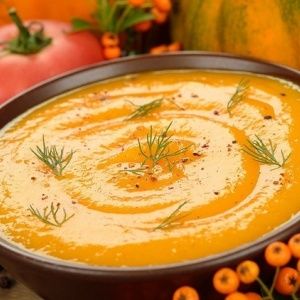 Harvest with the arrival of autumn. The fruits acquire a bright color, the crust becomes hard. The vegetables are picked together with the stalk, wiped with a napkin and stored. Gardeners advise eating fruits with scratches and cracks as soon as possible.
Harvest with the arrival of autumn. The fruits acquire a bright color, the crust becomes hard. The vegetables are picked together with the stalk, wiped with a napkin and stored. Gardeners advise eating fruits with scratches and cracks as soon as possible.
The vegetable is used to make tasty and healthy porridge, puree soup, compotes and jam. The product is consumed boiled, baked and fried. Part of the pumpkin is frozen in the freezer, after cutting it into small cubes.
Prepare a face mask based on pumpkin and honey. Nicotinic acid in the mixture relieves puffiness and returns a healthy color to the skin, and vitamin E accelerates the production of collagen, which is responsible for skin elasticity.
Pumpkin stores well in a cool place, so it can be used at any time of the year. In addition to masks, it is used to make refreshing compresses and nourishing lotions.
Advantages and disadvantages of the variety
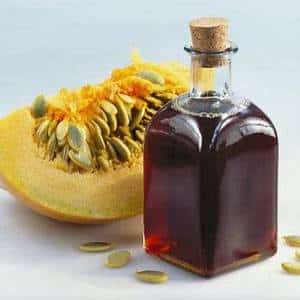 The Russian variety has a lot of advantages and useful properties, but gardeners also note a couple of disadvantages.
The Russian variety has a lot of advantages and useful properties, but gardeners also note a couple of disadvantages.
The advantages of Russian pumpkin are:
- high and stable yield;
- high taste and commercial qualities;
- immunity to diseases and pests;
- long shelf life;
- useful composition.
Among the disadvantages, they note the fact that the variety is demanding on the composition of the soil; the best harvest grows in fertile and nutritious soil.The plant also requires increased attention, as it needs timely formation of the bush and fertilizing.
Farmer reviews
It’s interesting to know what others think about Russian pumpkins. Here are reviews from experienced gardeners.
Ilya, Cheboksary: “I’ve never grown pumpkin before, so I decided to start with the Rossianka variety. The harvest turned out good, the fruits grew beautiful and even. The taste is excellent, the whole family liked it.”
Alisa, Orenburg: “Rossiyanka is one of my favorite early varieties. Caring for vegetables is a pleasure; they are unpretentious. The returns are excellent, I start harvesting at the end of August.”
Mikhail, Voronezh: “The summer was rainy, so the pumpkin got root rot. We managed to cure it, but lost half the harvest. Next time I will choose varieties that are more disease-resistant.”
Read also:
Conclusion
The orange beauty Russian woman has won the attention of many. They love it for its taste and appearance; the vegetable causes little trouble in caring for it. Compact fruits are perfectly stored and transported over long distances. In cooking, the product is valued for its vitamin composition, appetizing pulp and sweet aroma.
The variety rarely gets sick, which is especially important for regions with difficult climatic conditions. The harvest is harvested with the arrival of autumn. Pumpkins are picked together with the stem to increase their shelf life.